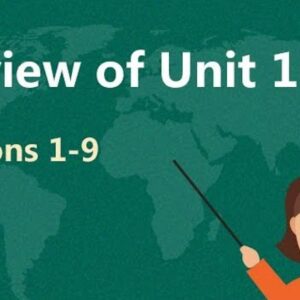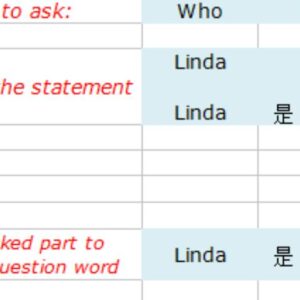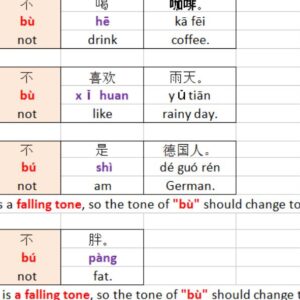In the present example, you’ll figure out how to say the numbers like 1,000 and 10,000.
Lesson Audio Review
Dialogue
| How to express 1,000 in Chinese |
| 1,000-9,000(1-9) + qiān |
yì qiān |
liǎng qiān |
sān qiān |
sì qiān |
wǔ qiān |
| 一千 |
两千 |
三千 |
四千 |
五千 |
| 1,000 |
2,000 |
3,000 |
4,000 |
5,000 |
| liù qiān |
qī qiān |
bā qiān |
jiǔ qiān |
| 六千 |
七千 |
八千 |
九千 |
|
| 6,000 |
7,000 |
8,000 |
9,000 |
|
|
| e.g. |
| 4,356 |
4,000 |
300 |
50 |
6 |
| sì qiān |
sān bǎi |
wǔ shí |
liù |
| 3,214 |
3,000 |
200 |
10 |
4 |
| sān qiān |
èr bǎi |
yī shí |
sì |
|
| Two ways to express the number 2: 二(èr) & 两(liǎng) |
| In Chinese, there are two ways to express the number 2. One is 二(èr) , and the other is 两(liǎng). Sometimes they are interchangeble, but there are some circumstances that you have to use either of them. |
| No. |
Character |
pīn yīn |
| 2 |
二 |
èr |
| 20 |
二十 |
èr shí |
| 200 |
两百/二百 |
liǎng bǎi / èr bǎi |
| 220 |
两百二十/二百二十 |
liǎng bǎi èr shí/ èr bǎi èr shí |
| 2,000 |
两千 |
liǎng qiān |
| 2,220 |
两千两百二十/两千二百二十 |
liǎng qiān liǎng bǎi èr shí/ liǎng qiān èr bǎi èr shí |
|
| When speaking the numbers, if 2 falls on the single digit or tens digt, it should be read as èr; If 2 falls on the hundred digit, it can either be read as 两百 or 二百,and if 2 falls on the thousand digit or the higher digit, 两 should be read 两(liǎng). |
| How to express 10,000 in Chinese? |
| The Chinese number system is a little bit tricky to many people at first as the Chinese split numbers by every four digits rather than every three digit, so if you split the number the Chinese way, you’ve got to move the comma one digit to the left. And the first obstable you may encounter is 10,000, which is split as 1,0000 in Chinese and we read the comma here as 万 (wàn).
For example:
|
No.
| No. |
 |
No. |
pīn yīn |
| 30,000 |
 |
“3,0000” |
sān wàn |
| 50,000 |
 |
“5,0000” |
wǔ wàn |
| 45,000 |
 |
“4,5000” |
sì wàn wǔ qiān |
|
|




